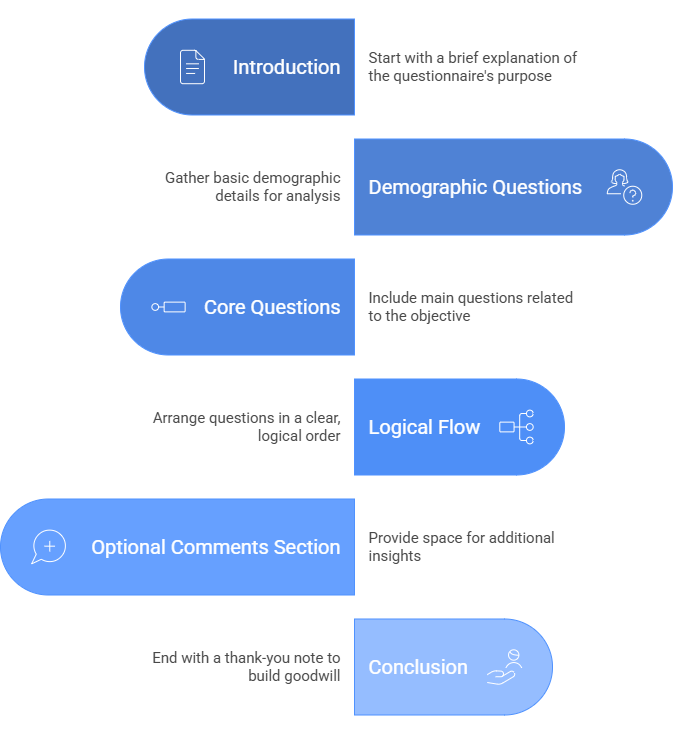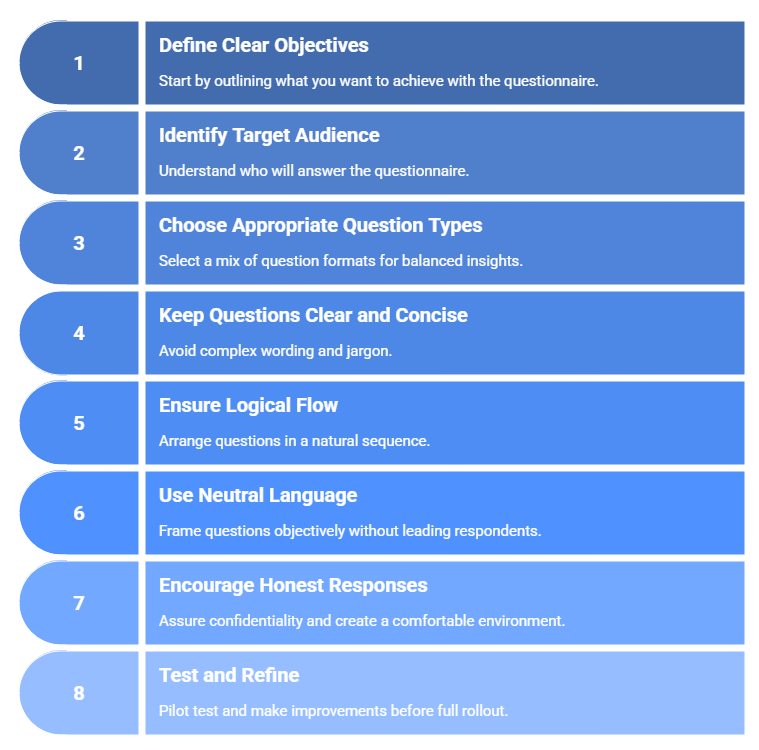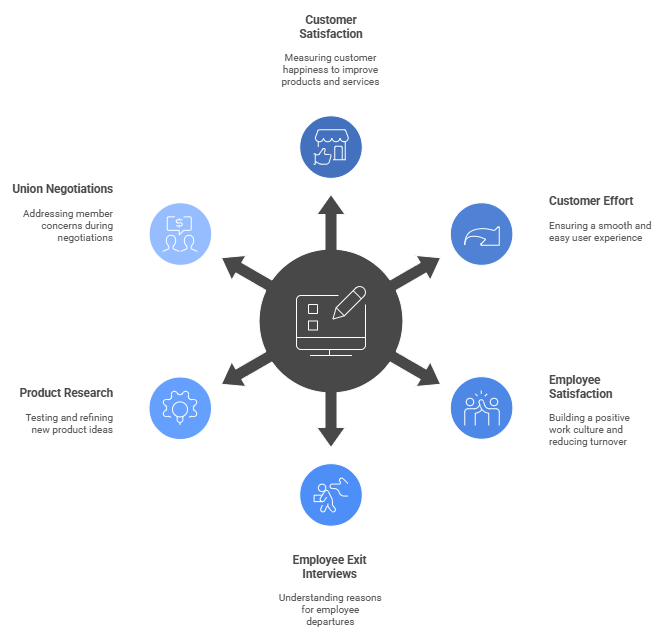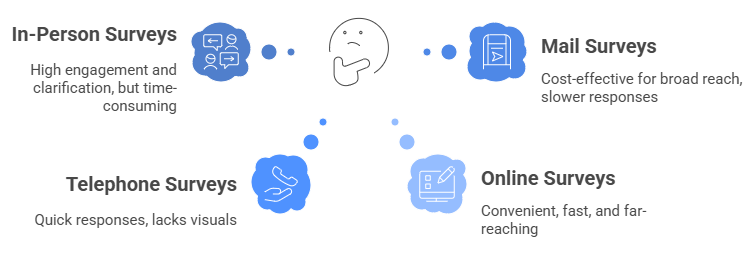Key Takeaways
- A well-designed questionnaire ensures accurate, useful data.
- Key steps for developing a questionnaire: Define goals, know your audience, choose question types, and test.
- Use for customer feedback, employee engagement, and research.
- Keep it simple, short, and unbiased for better results.
- Methods: In-person, phone, mail, and online.
- Analyze by organizing, reviewing, and interpreting data effectively.
A well-designed questionnaire is the backbone of any successful research or feedback process. Whether you’re trying to understand customer satisfaction, measure employee engagement, or collect data for a study, the quality of your questionnaire determines the accuracy of your insights. But creating one isn’t as simple as listing a few questions. It requires careful planning, knowing your goals, choosing the right question types, and structuring them for clarity and engagement. In this guide, we’ll walk you through how to make a questionnaire step by step, along with best practices and examples to help you get started.
Why is it Important to design a Questionnaire?
Creating a questionnaire properly is crucial because it ensures the data you collect is accurate, reliable, and relevant to your objectives. A well-structured questionnaire reduces confusion, eliminates bias, and improves response rates, leading to actionable insights that support informed decision-making.
What to Include in a Questionnaire?

-
Introduction
To make a good questionnaire, start with a short introduction explaining the purpose of the questionnaire and how the responses will be used. This sets expectations and encourages participation.
-
Demographic Questions
The format for the questionnaire for the survey should include basic demographic details like age, gender, and location to segment and analyse responses effectively.
-
Core Questions
These form the main body of your questionnaire and should directly relate to your objective, ensuring relevant and actionable data.
-
Logical Flow
Arrange questions in a clear, logical order to maintain coherence and avoid confusing the respondent.
-
Optional Comments Section
Provide space for open-ended comments so respondents can share additional insights beyond structured questions.
-
Conclusion
End with a thank-you note, reinforcing appreciation for their time and contribution, which builds goodwill.
How to Make a Questionnaire

-
Define Clear Objectives
Start by outlining what you want to achieve with the questionnaire. This helps in creating relevant questions that serve your research purpose.
-
Identify Target Audience
Understand who will answer the questionnaire so you can design questions suited to their knowledge and perspective.
-
Choose Appropriate Question Types
Select a mix of question formats like multiple-choice, Likert scale, and open-ended for balanced insights.
-
Keep Questions Clear and Concise
Avoid complex wording and jargon to ensure respondents can easily understand and answer.
-
Ensure Logical Flow
To lay out a questionnaire, you must arrange questions in a sequence that feels natural, starting from general to more specific topics.
-
Use Neutral Language
Frame questions objectively without leading respondents toward a particular answer.
-
Encourage Honest Responses
Assure confidentiality and create a comfortable environment to get genuine feedback.
-
Test and Refine
Pilot test your questionnaire with a small group, gather feedback, and make improvements before full rollout.
When to Use a Questionnaire

-
Customer Satisfaction
Use questionnaires to measure how happy customers are with your products or services, helping identify areas for improvement.
-
Customer Effort
Assess how easy it is for customers to interact with your brand or use your product, ensuring a smooth user experience.
-
Employee Satisfaction & Engagement
Gather insights into employee morale and engagement levels to build a positive work culture and reduce turnover.
-
Employee Exit Interviews
Understand why employees are leaving by collecting honest feedback through structured questionnaires.
-
Product Research
Use questionnaires to test new product ideas, gauge market demand, and refine features before launch.
-
Union Negotiations
Collect opinions from members to ensure their concerns and priorities are addressed during negotiation processes.
Tips and Tricks for Creating an Effective Questionnaire
-
Keep It Simple
Avoid complex or jargon-heavy language to make questions easy to understand for all respondents.
-
Use Fair Rating Scale
Ensure your scales are balanced and consistent to avoid bias and get accurate responses.
-
Keep it Short and Sweet
Limit the number of questions to maintain engagement and reduce survey fatigue.
-
Test and Refine
Run a pilot test to identify confusing questions and make improvements before full deployment.
Questionnaire Administration Methods

- In-Person Surveys: Great for engagement and clarification, though more time-consuming.
- Telephone Surveys: Quick responses, but limited by lack of visuals.
- Online Surveys (Q&As, Polls, Quizzes): Convenient, fast, and far-reaching. Want to create interactive quizzes effortlessly? Tools like Interactico make it easy to engage your audience online.
- Mail Surveys: Cost-effective for broad reach, though responses may be slower.
Create interactive quizzes and questionnaires effortlessly with Interactico

How to Analyze Questionnaire Data
- Organize the Data: Gather all responses and arrange them in a structured format for easier review and analysis.
- Analyze Quantitative Data: Use statistical methods, charts, or graphs to identify trends and numerical insights.
- Analyze Qualitative Data: Review open-ended responses for themes, sentiments, and recurring patterns.
- Interpret Your Data: Draw meaningful conclusions from the analysis to make informed decisions or improvements.
Creating a questionnaire is more than just asking questions; it’s about designing a structured tool that delivers clear, actionable insights. By defining your objectives, choosing the right question types, and following best practices, you can gather accurate and valuable data. Whether for customer feedback, employee engagement, or research, a well-designed questionnaire helps you make informed decisions and improve outcomes.


